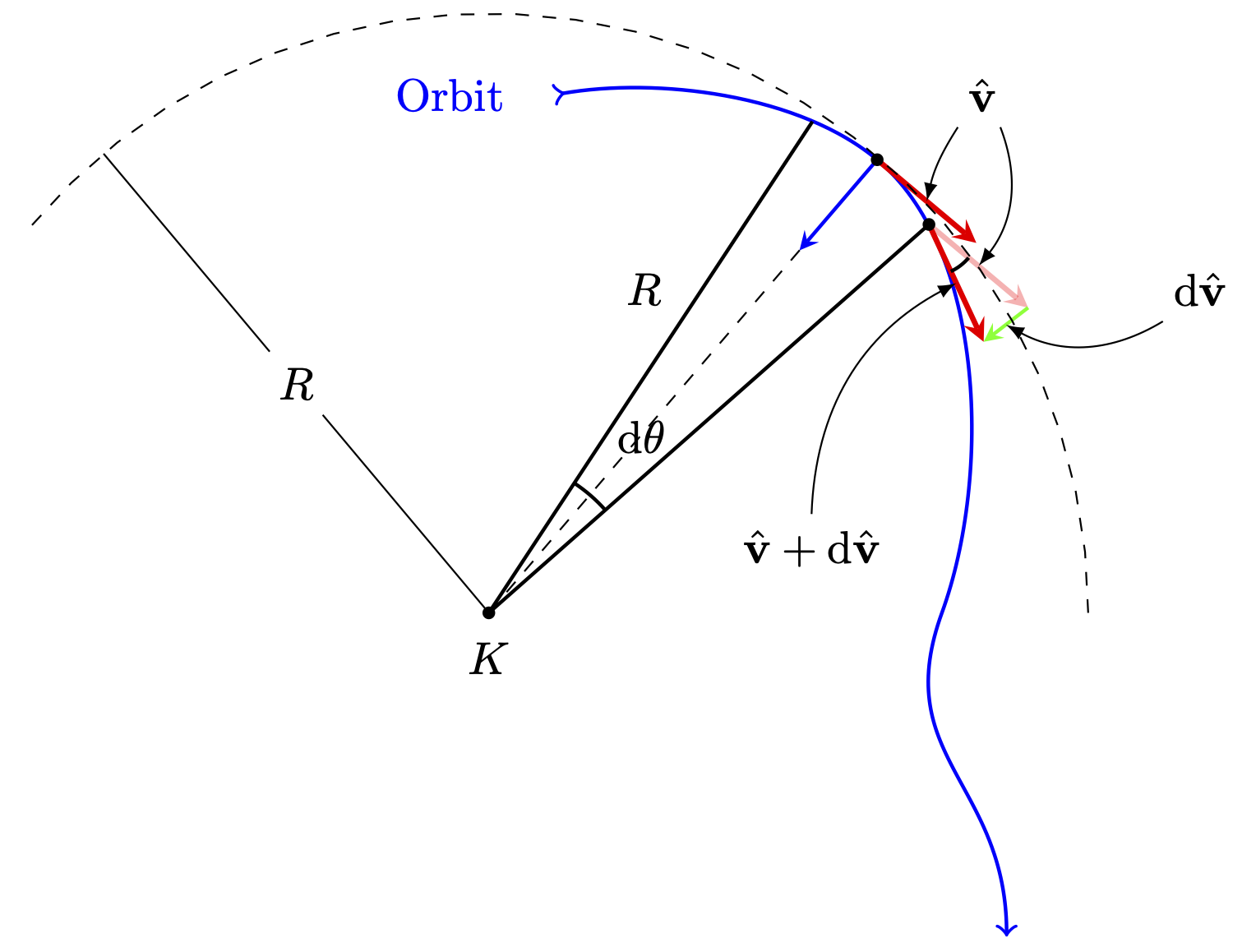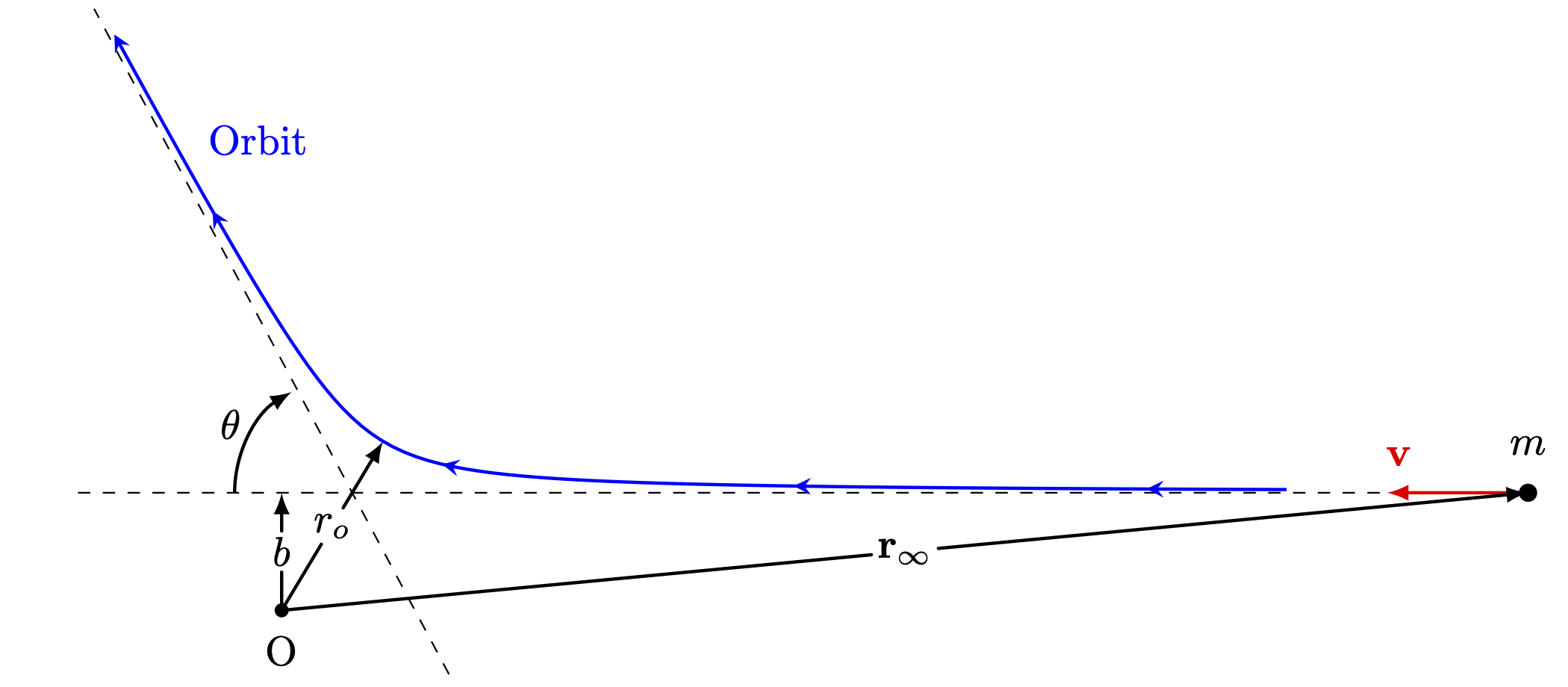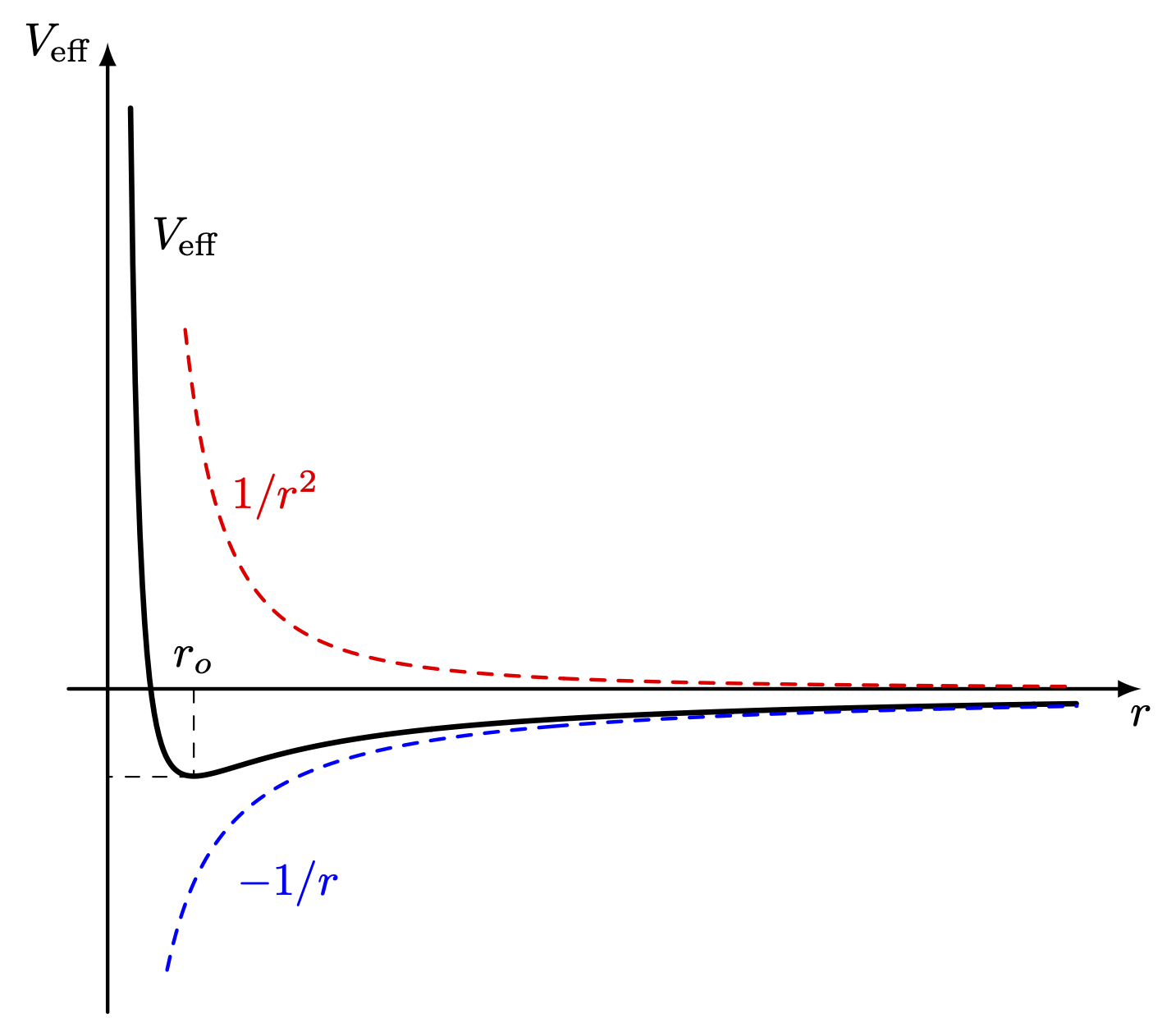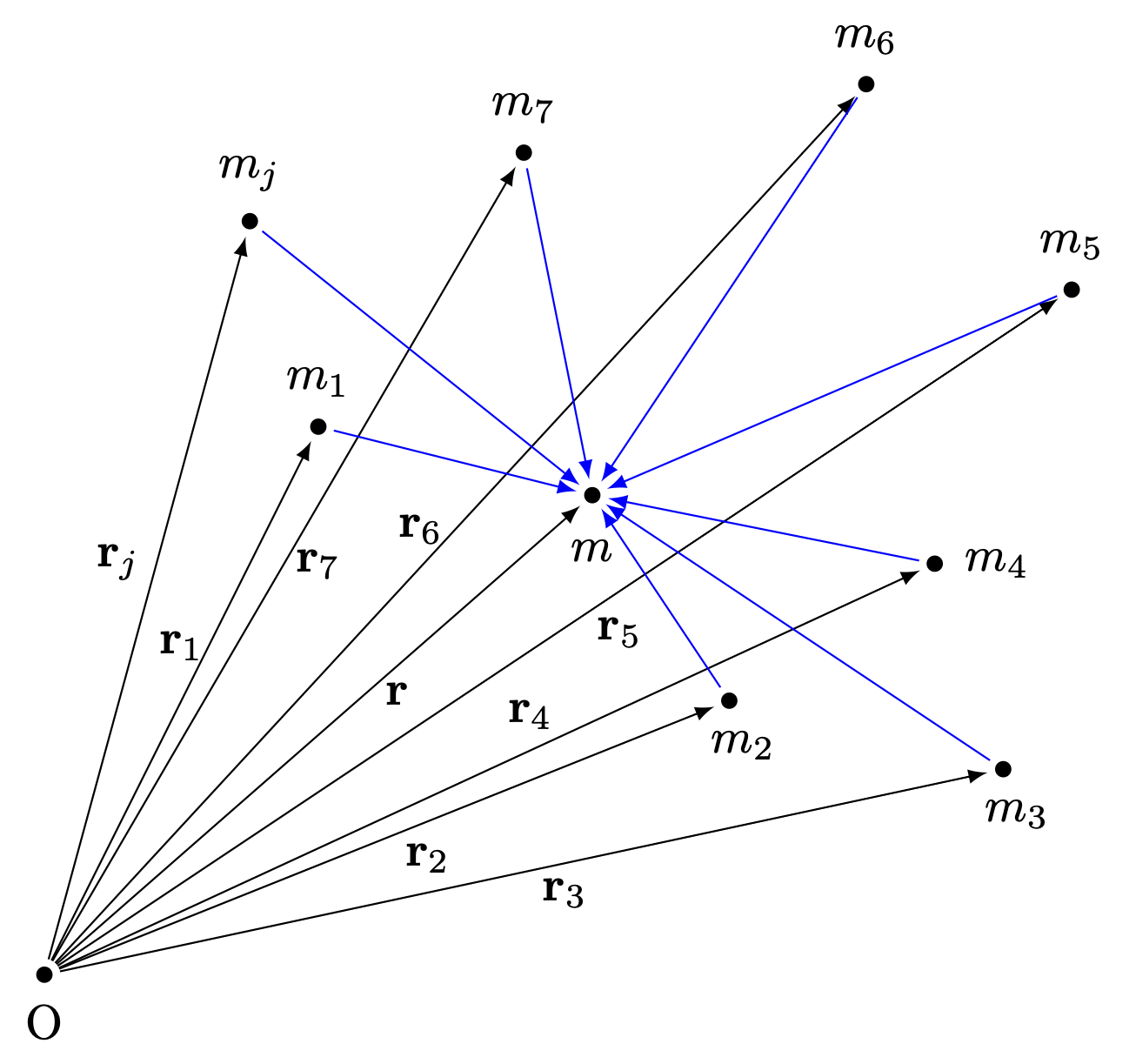Edit and compile if you like:
\documentclass[border=3pt]{standalone}
%Figures
\usepackage{graphicx}
%Drawing
\usepackage{tikz}
%Tikz Library
\usetikzlibrary{angles, quotes, calc, decorations.markings, intersections}
%Notation
\usepackage{physics}
\usepackage{bm}
%New Command
%%Right Angle
\def\rightangle[size=#1](#2,#3,#4){\draw[thick] ($(#3)!#1!(#2)$) -- ($($(#3)!#1!(#2)$)!#1!90:(#2)$) -- ($(#3)!#1!(#4)$)}
%%Midline Label
\newcommand{\midlabelline}[3]{
\node (midlabel) at ($ (#1)!.5!(#2) $) {#3};
\draw (#1) -- (midlabel);
\draw (midlabel) -- (#2);
}
%Styles
%%Arrow in the Middle
\tikzset{midarrow/.style = {[postaction=decorate, decoration={markings,mark=at position .52 with \arrow{stealth}}, red, line width=1.5]}}
\begin{document}
%Macros
\pgfmathsetmacro{\rcircle}{4.63}
\begin{tikzpicture}
% %Grid
% \draw[thin, dotted] (0,0) grid (10,10);
% \foreach \i in {1,...,10}
% {
% \node at (\i,-2ex) {\i};
% }
% \foreach \i in {1,...,10}
% {
% \node at (-2ex,\i) {\i};
% }
% \node at (-2ex,-2ex) {0};
%Coordinates
\coordinate (A) at (6,7.5);
\coordinate (B) at (3.5,8);
\coordinate (C) at (6.5,4);
\coordinate (D) at (7,1.5);
\coordinate (E) at (3,4);
\coordinate (F) at (5.5,7.795);
\coordinate (G) at (6.4,7);
\coordinate (AA) at ($(G)+(-40:1)$);
\coordinate (AAa) at ($(A)+(-40:1)$);
\coordinate (GG) at ($(G)+(-65:1)$);
\coordinate (AAA) at ($(A)+(-40:-1.3)$);
\coordinate (GGG) at ($(G)+(-63:-1.5)$);
% %%Nodes
% \node at (A) {A};
% \node at (B) {B};
% \node at (C) {C};
% \node at (D) {D};
% \node at (E) {E};
% \node at (F) {F};
% \node at (G) {G};
%Orbit
\draw[>->, thick, blue] (B) to[out=10, in=140, looseness=0.8] (A) to[out=-40, in=70, looseness=0.8] (C)
to[out=250, in=90, looseness=1.2] (D);
\node[blue] at (2.7,8) {Orbit};
%%Lines
\draw[dashed] (E) -- (A);
\draw[thick] (E) -- (F);
\node at (4.2,6.5) {$R$};
\draw[thick] (E) -- (G);
% \draw[dashed, red, domain=5:8] plot (\x,{-0.857*\x+12.657});
% \draw[dashed, red, domain=5.8:7.9] plot (\x,{-1.82*\x+18.65});
%%Vector
\draw[thick, blue, -stealth] (A) -- ($(A)!.2!(E)$);
\draw[very thick, red, -stealth, name path=line1] (A) -- (AAa);
\draw[very thick, red, -stealth, opacity=0.3] (G) -- (AA);
\draw[thick, green, -stealth] (AA) -- (GG);
\draw[very thick, red, -stealth] (G) -- (GG);
% %%Vector Dashed
% \draw[thick, dashed, red] (A) -- ++(-40:-1.2);
% \draw[thick, dashed, red, name path=line2] (G) -- ++(-63:-1.75);
% %%Intersection
% \path [name intersections={of=line1 and line2, by=int}];
%%Nodes
\node[shift={(0,1.3)}] (m) at ($(A)!0.7!(AA)$) {$\vu{v}$};
\draw[-latex] (m) to[bend right=10] ($(A)!0.5!(AAa)$);
\draw[-latex] (m) to[bend left=30] ($(G)!0.5!(AA)$);
\node (a) at (5.5,4.5) {$\vu{v}+\dd\vu{v}$};
\draw[-latex] (a) to[bend left=30] ($(G)!0.5!(GG)$);
\node (b) at (8.5,6.5) {$\dd\vu{v}$};
\draw[-latex] (b) to[bend left=30] ($(AA)!0.5!(GG)$);
%Circle
\draw[dashed, domain=0:140] plot ({\rcircle*cos(\x)+3}, {\rcircle*sin(\x)+4});
%%Radius
\midlabelline{E}{{\rcircle*cos(130)+3}, {\rcircle*sin(130)+4}}{$R$}
%%Center
\node[shift={(0,-0.35)}] at (E) {$K$};
%Angles
\pic[draw=black, thick, "$\dd\theta$", angle radius=1.2cm, angle eccentricity=1.5] {angle = G--E--F};
\pic[draw, thick, angle radius=0.4cm] {angle = GG--G--AA};
%Points
\draw[fill=black] (A) circle (1.2pt);
\draw[fill=black] (E) circle (1.2pt);
\draw[fill=black] (G) circle (1.2pt);
\end{tikzpicture}
\end{document}Click to download: acceleration_1.tex
Open in Overleaf: acceleration_1.tex
This file is available on GitHub.
See more on the author page of Alexandros Tsagkaropolulos.






